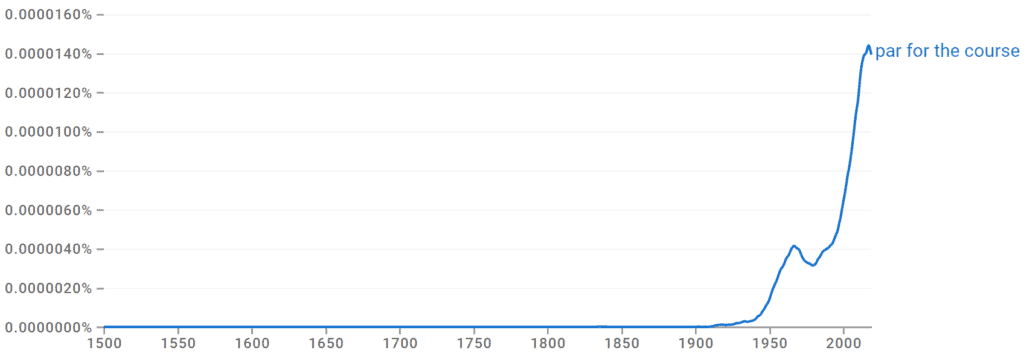The meaning of par for the course is that a situation or outcome is exactly what one might typically expect, especially in the context of minor setbacks or disappointments. Ever heard someone sigh and say, “That’s par for the course,” after a minor inconvenience? That’s the idiom in action!
Originating from the realm of golf, where “par” signifies the standard number of strokes expected on a hole or round, this saying has since found its way into everyday conversation, capturing the essence of predictable outcomes. Idioms like this are metaphorical expressions, where the words, when combined, paint a vivid picture distinct from their individual meanings. They add color and depth to the English language, turning routine exchanges into memorable narratives.
Curious about more examples and the rich history of this phrase? Stick around, and I’ll walk you through its nuances and origins, ensuring you’re well-equipped to use it seamlessly in your chats!
Par for the Course Meaning
Par for the course means that something’s average or typical within a certain context. In other words, if someone tells you, “That’s par for the course,” they’re saying that the situation is exactly as they’d expect it to be, for better or worse (it’s usually the worst). It’s your metaphorical shrug when life gives you lemons but forgets the sugar for lemonade.
Par for the Course Origin and Etymology
The saying comes from the mid-1900s and directly from the game of golf, where par refers to the standard number of strokes it should take a competent player to complete a hole or a round. If you’re not a golfer (me neither!), don’t fret; the idiom has made its way into general vernacular, and it’s no longer exclusive to discussions about the 18th hole.
Synonyms for the Par for the Course Saying
Can’t quite put your finger on the right way to express typicality? No worries, I have a list of synonyms that are, dare I say, on par.
- Business as usual
- Standard procedure
- Same old, same old
- As expected
- No surprises there
Using ‘Par for Course’ in Sentence Examples
- Missing the train was par for the course for Maddy, who was always late to everything.
- Long hours and late nights are par for the course in this industry.
- Well, it’s raining again, but that’s just par for the course in Seattle.
- You didn’t get the job? That’s par for the course in such a competitive field like interior design.
- He was early for the meeting, but that’s par for the course with Jim.
- A flat tire? That’s just par for the course with this old piece of junk.
- My enthusiasm at the start of the project versus the middle is par for the course with ADHD.
- Oh, don’t take it personally! Rude comments are par for the course on social media.
- The waiter mixed up our orders, but I guess that’s par for the course at a busy, understaffed restaurant.
- The babysitter called in the middle of our date night, and we had to go home, but that’s par for the course when you’re a parent.
Hole in One!
You’re now a par for the course pro and armed with the meaning, golf history, some synonyms, and even examples of how to weave this idiom into your daily conversations. Would you like another round of idioms? Trust me, they’re more than up to par.



